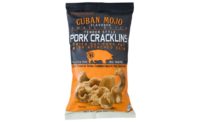Bankruptcy – An unexpected lifeline

The COVID-19 pandemic hit the food industry particularly hard. While government programs soften the impact, many businesses faced devastating revenue drops while expenses like rent and bank debt continued to mount. Recovering from COVID-19 may be just as difficult for businesses as it is for individuals. While some businesses may find landlords, banks and other creditors willing to work with them, others are not so fortunate. For these businesses, it may be necessary to consider available options for reorganizing under federal bankruptcy protection.
Traditionally there were two bankruptcy options for businesses. Under Chapter 7, the debtor business liquidates all of their assets, which are then distributed among its creditors, and goes out of business. This makes Chapter 7 an unattractive option for many small business owners, who may choose to liquidate without the benefit of bankruptcy petition.
 Paul H. Aloe
Paul H. Aloe
Under Chapter 11, the debtor business retains control over their business while working out payment arrangements with creditors, allowing them to stay in business. It allows the debtor to jettison unprofitable leases and executory contracts.
Bankruptcy under Chapter 11 has been the typical option for large businesses. But the downside is that it is very expensive. The debtor typically must pay not only for its own counsel and other professionals, but those retained by a creditors committee. There are expensive and time-consuming reporting requirements. And in most cases, the business must obtain the affirmative vote of various classes of creditors, for each class two thirds in amount, and majority in number. In many cases, the owners, to retain equity in the business, must contribute fresh capital. For these reasons, Chapter 11 is not practical for the typical small business.
This changed with the passage of the Federal Small Business Reorganization Act (SBRA) of 2019 and the introduction of Subchapter V. Under Subchapter V there is no creditors committee, costs are streamlined, and the trustee fee is eliminated. While Subchapter V still has a trustee, the role is different – assisting the debtor to restructure. Most significantly, Subchapter V eliminates a provision that prohibits owners from retaining equity interest in the re-organized debtor. Thus, many closely held smaller businesses can successfully reorganize, have its owners retain its equity, and not be crushed by the costs of the proceedings. In the experience of this author, many businesses that could never survive a full-blown Chapter 11 can successfully reorganize under Subchapter V.
As originally enacted in February of 2020, a company could file for bankruptcy protection under Subchapter V if they had debts totaling less than $2,725,625. The Coronavirus Aid, Relief and Economic Security Act (CARES) raised the ceiling to $7,500,000 until March 27, 2021. Subsequent legislation this year extended the $7,500,000 ceiling until March 27, 2022. These limitations are important as a business that exceeds them cannot obtain the benefits of Subchapter V. It is important for businesses with debts greater than $2,725,625 but less than $7,500,000 to consider the Subchapter V option well before the March 27, 2022 deadline as there is no assurance that Congress will provide any further extensions.
For a foodservice business, Subchapter V could be a lifeline. For those businesses with a strong, underlying business that was doing well until last year and are having troubles due to supply problems or staffing issues, reorganization under Subchapter V may be a good option. Subchapter V gives small businesses a process like Chapter 11 but at a fraction of the cost. With the debt restructured, a previously failing business can grow and prosper.
It’s important to keep in mind that bankruptcy is harsh medicine, and not always the right medicine. If your business is experiencing financial distress, seek out professional help early. Many companies wait too long, until their accounts are completely dried up and they have nothing left.
Often with small businesses, owners are forced to give guarantees to banks, landlords and even vendors. While filing the business alone does not create a stay for owners, a plan can often provide relief for owners as well. And where there are guarantees, if the business liquidates or goes into Chapter 7, the owners remain on the hook with respect to the guarantees.
Finally, while bankruptcy can help fix past mistakes and misfortunes, including the impact of the pandemic, it’s not a solution for a business that does not have the prospect of being profitable. Regardless, it’s important to know that you have options, and with good counsel, you can save your business.
Paul H. Aloe is a partner at Kudman Trachten Aloe Posner LLP. He concentrates his practice in the following areas: litigation, bankruptcy business reorganizations, business law, zoning and land use, commercial real estate, and employment litigation. He graduated from Maurice A. Deane School of Law at Hofstra University in 1983. He received his BA from The George Washington University in 1980. You can reach Paul at paloe@kudmanlaw.com.
Looking for a reprint of this article?
From high-res PDFs to custom plaques, order your copy today!







